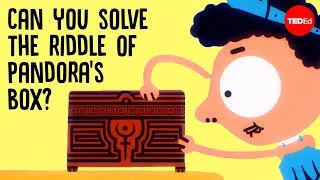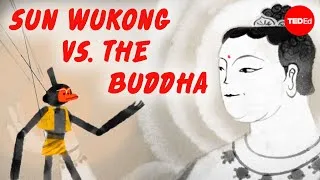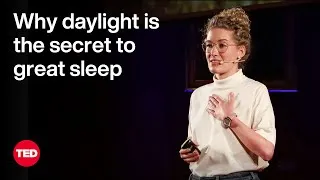What’s the smallest thing in the universe? - Jonathan Butterworth
1,320,396 views ・ 2018-11-15
請雙擊下方英文字幕播放視頻。
譯者: Lilian Chiu
審譯者: Helen Chang
00:06
If you were to take any everyday object,
say a coffee cup, and break it in half,
0
6832
5160
如果拿一樣日常物品,比如咖啡杯,
把它劈成兩半,再劈成兩半,
00:11
then in half again, and keep carrying on,
where would you end up?
1
11992
4420
不斷重覆,結果會是什麼?
00:16
Could you keep on going forever?
2
16412
1731
能無止境重覆嗎?
00:18
Or would you find a set of
indivisible building blocks
3
18143
3014
還是能找到一組
不能再更細分的基礎元素,
00:21
out of which everything is made?
4
21157
2522
是萬物的組成呢?
00:23
Physicists have found the latter- that
matter is made of fundamental particles,
5
23679
4721
物理學家的答案是後者:
物質由基礎粒子組成,
00:28
the smallest things in the universe.
6
28400
2283
粒子是宇宙中最小的東西。
00:30
Particles interact with each other according
to a theory called the “Standard Model”.
7
30683
5059
粒子的彼此互動
根據「標準模型」這個理論。
00:35
The Standard Model is a remarkably
elegant encapsulation
8
35742
3298
標準模型
出色、優雅地概括描述
00:39
of the strange quantum world of
indivisible, infinitely small particles.
9
39040
5357
無法更細分粒子的奇特量子世界;
00:44
It also covers the forces that govern
how particles move,
10
44397
3196
它也涵蓋粒子的移動力、
00:47
interact, and bind together to give shape
to the world around us.
11
47593
4623
互動力、結合力,
形塑我們周遭的世界。
00:52
So how does it work?
12
52216
1510
它是如何運作的?
00:53
Zooming in on the fragments of the cup,
13
53726
2215
放大細看杯子的碎片,
00:55
we see molecules, made of atoms
bound up together.
14
55941
3696
我們看到分子,由原子結合而成。
00:59
A molecule is the smallest unit
of any chemical compound.
15
59637
4328
分子是所有化合物的最小單位。
01:03
An atom is the smallest unit of any
element in the periodic table.
16
63965
4454
元素週期表中所有元素的
最小單位則是原子。
01:08
But the atom is not the
smallest unit of matter.
17
68419
3454
但原子並不是物質的最小單位。
01:11
Experiments found that each atom
has a tiny, dense nucleus,
18
71873
3969
實驗發現原子全都有個
小而緊密的核,
01:15
surrounded by a cloud
of even tinier electrons.
19
75842
4272
被一群更小的電子包圍著。
電子是我們所知
01:20
The electron is, as far as we know,
20
80114
2153
01:22
one of the fundamental, indivisible
building blocks of the universe.
21
82267
3764
無法再分割的宇宙基礎元素之一。
01:26
It was the first Standard Model
particle ever discovered.
22
86031
4071
它是最早被發現的標準模型粒子。
01:30
Electrons are bound to an atom’s
nucleus by electromagnetism.
23
90102
4133
原子核透過電磁作用限制電子,
01:34
They attract each other by exchanging
particles called photons,
24
94235
3831
二者透由交換光子來彼此互吸,
01:38
which are quanta of light that carry
the electromagnetic force,
25
98066
4064
而光子就是光的量子,帶著電磁力,
那是標準模型基本力之一。
01:42
one of the fundamental
forces of the Standard Model.
26
102130
3271
01:45
The nucleus has more secrets to reveal,
as it contains protons and neutrons.
27
105401
5481
原子核還可以揭露更多的秘密,
因為它包含了光子和中子。
01:50
Though once thought to be fundamental
particles on their own, in 1968
28
110882
4157
雖然一度被認為是基本的粒子,
但在 1968 年,物理學家發現
01:55
physicists found that protons and neutrons
are actually made of quarks,
29
115039
4330
光子和中子其實是由
不可分割的夸克組成。
01:59
which are indivisible.
30
119369
2304
02:01
A proton contains two “up” quarks
and one “down” quark.
31
121673
4059
光子含有兩個「上」夸克
和一個「下」夸克。
02:05
A neutron contains two down
quarks and one up.
32
125732
3920
中子含有兩個下夸克
和一個上夸克。
02:09
The nucleus is held together
by the strong force,
33
129652
3151
原子核由一股強力維繫住,
02:12
another fundamental force
of the Standard Model.
34
132803
3176
是標準模型的另一種基本力。
02:15
Just as photons carry
the electromagnetic force,
35
135979
2594
正如光子帶著電磁力,
02:18
particles called gluons
carry the strong force.
36
138573
3729
名為膠子的粒子則帶著這股強力。
02:22
Electrons, together with up
and down quarks,
37
142302
2560
電子與「上」、「下」夸克,
02:24
seem to be all we need to build atoms
and therefore describe normal matter.
38
144862
4892
似乎就夠用來建構原子,
因而能用來描述一般的物質。
02:29
However, high energy experiments reveal
that there are actually six quarks–
39
149754
4498
然而高能實驗發現
其實有六種夸克——
02:34
down & up, strange & charm,
and bottom & top
40
154252
5441
下與上、奇與魅、底與頂——
02:39
- and they come in a wide range of masses.
41
159693
2552
它們的質量相異甚大。
02:42
The same was found for electrons,
42
162245
1856
情況類似重一點的電子的兄弟,
02:44
which have heavier siblings
called the muon and the tau.
43
164101
4086
叫做渺子和濤子。
02:48
Why are there three (and only three)
different versions
44
168187
3272
何以這些粒子都恰好有
三種不同的版本
02:51
of each of these particles?
45
171459
2010
02:53
This remains a mystery.
46
173469
1812
仍是個謎。
02:55
These heavy particles are only produced,
for very brief moments,
47
175281
4035
這些很重的粒子
存在的瞬間極為短暫,
02:59
in high energy collisions,
and are not seen in everyday life.
48
179316
4441
由高能撞擊產生,非日常所能見。
03:03
This is because they decay very
quickly into the lighter particles.
49
183757
3666
這是因為它們
急速衰退成較輕的粒子。
03:07
Such decays involve the exchange
of force-carrying particles,
50
187423
4416
這種衰退涉及交換
稱為 W 和 Z 的載力粒子,
03:11
called the W and Z, which
– unlike the photon – have mass.
51
191839
4499
它們與光子不同,具有質量,
03:16
They carry the weak force,
the final force of the Standard Model.
52
196338
4833
它們攜帶的弱力
是標準模型的最後一種力。
03:21
This same force allows protons and
neutrons to transform into each other,
53
201171
4757
這種弱力能讓光子和中子互換,
03:25
a vital part of the fusion interactions
that drive the Sun.
54
205928
4299
乃是太陽融合作用中的重要部分。
03:30
To observe the W and Z directly,
55
210227
2359
為要直接觀察 W 和 Z,
03:32
we needed the high energy collisions
provided by particle accelerators.
56
212586
4386
我們用粒子加速器做高能撞擊。
03:36
There’s another kind of Standard Model
particle, called neutrinos.
57
216972
3495
另一種標準模型粒子稱為微中子。
03:40
These only interact with other particles
through the weak force.
58
220467
4448
它們只會透過弱力和其他粒子互動。
03:44
Trillions of neutrinos, many generated
by the sun, fly through us every second.
59
224915
6047
有數以兆計由太陽產生的微中子
分分秒秒穿透我們。
03:50
Measurements of weak interactions found that
there are different kinds of neutrinos
60
230962
3958
測量弱互動
發現有不同類的微中子
03:54
associated with the electron,
muon, and tau.
61
234920
3824
分別和電子、渺子、濤子有關。
03:58
All these particles also have
antimatter versions,
62
238744
3264
這些粒子都有反物質的版本,
04:02
which have the opposite charge
but are otherwise identical.
63
242008
3539
除了電荷相反,其他都一樣。
04:05
Matter and antimatter particles are
produced in pairs in high-energy collisions,
64
245547
4603
高能撞擊會產生
成對的物質和反物質粒子。
04:10
and they annihilate each other
when they meet.
65
250150
2355
它們相遇時會互相抵銷。
04:12
The final particle of the Standard Model
is the Higgs boson
66
252505
3721
最後一種標準模型粒子
是希格斯玻色子,
04:16
– a quantum ripple in the background
energy field of the universe.
67
256226
3793
是宇宙的背景能量場中的量子漣漪。
04:20
Interacting with this field is how all the
fundamental matter particles acquire mass,
68
260019
5565
所有的基本物質粒子透由
與能量場互動而取得質量,
04:25
according to the Standard Model.
69
265584
2175
這是標準模型的說法。
04:27
The ATLAS Experiment on
the Large Hadron Collider
70
267759
3029
大型強子對撞機的超環面儀器實驗
04:30
is studying the Standard Model in-depth.
71
270788
2801
深入研究標準模型。
04:33
By taking precise measurements of the particles
and forces that make up the universe,
72
273589
4324
透由精確量測形成宇宙的粒子和力,
04:37
ATLAS physicists can look for
answers to mysteries
73
277913
2998
超環面儀器的物理學家
嘗試破解標準模型無法解釋的謎題。
04:40
not explained by the Standard Model.
74
280911
2510
04:43
For example, how does gravity fit in?
75
283421
2714
比如,重力在這裡的角色是什麼?
04:46
What is the real relationship between
force carriers and matter particles?
76
286135
4321
載力粒子和物質粒子間的
真正關係是什麼?
04:50
How can we describe “Dark Matter”,
77
290456
1933
我們要如何描述「暗物質」?
04:52
which makes up most of the mass in the
universe but remains unaccounted for?
78
292389
4260
大部分宇宙物質由暗物質組成,
但暗物質卻沒被解釋。
04:56
While the Standard Model provides a beautiful
explanation for the world around us,
79
296649
4591
雖然標準模型漂亮地解釋
我們周遭的世界,
05:01
there is still a universe’s worth of
mysteries left to explore.
80
301240
4199
有海量的宇宙謎題仍待我們去探索。
New videos
Original video on YouTube.com
關於本網站
本網站將向您介紹對學習英語有用的 YouTube 視頻。 您將看到來自世界各地的一流教師教授的英語課程。 雙擊每個視頻頁面上顯示的英文字幕,從那裡播放視頻。 字幕與視頻播放同步滾動。 如果您有任何意見或要求,請使用此聯繫表與我們聯繫。







